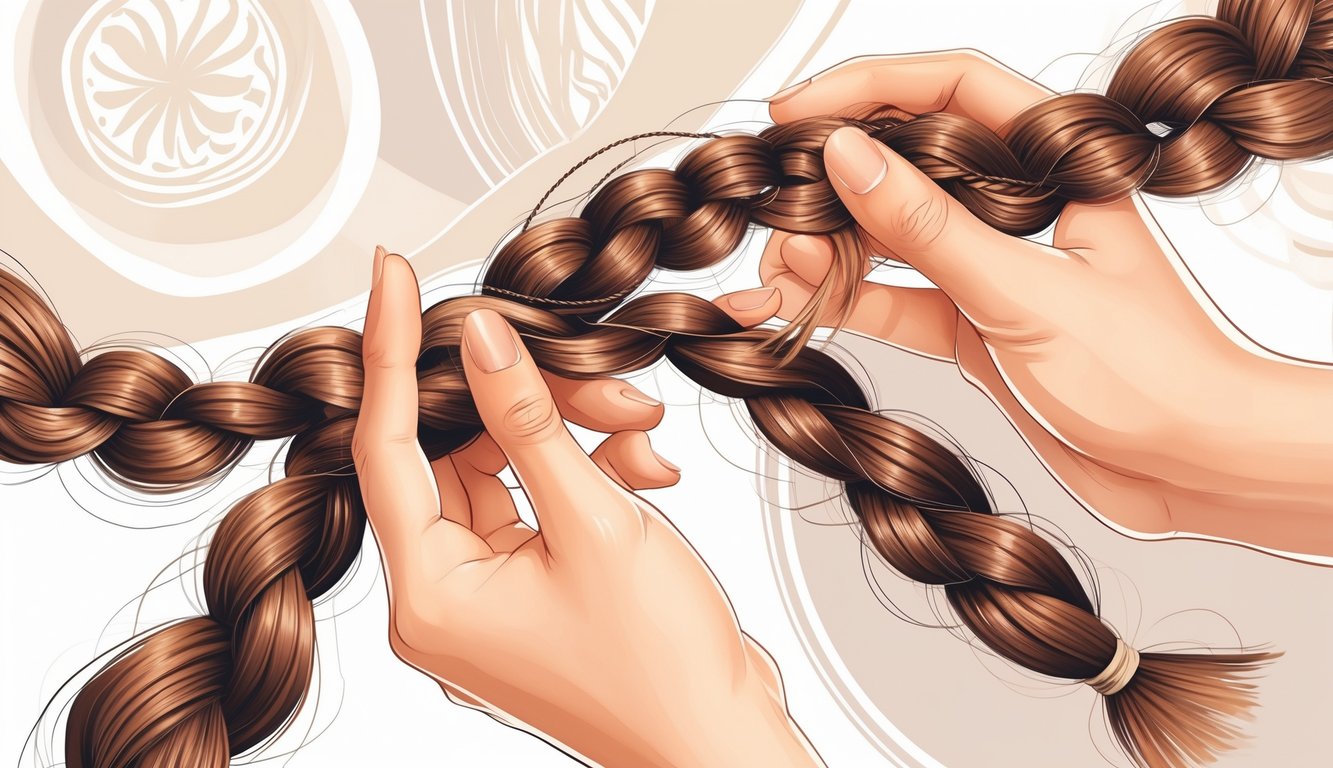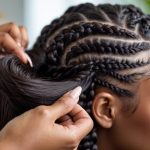
Community Insights and Real-World Feedback
Convincing someone that a tiny tweak in braid tension adds a week to their style? Good luck. Everyone wants instant results, but there’s this huge disconnect between what stylists say and what clients actually believe after the scarf comes off and the frizz shows up.
Stylist Comments on Results
Stylists love stitch braids with perfect parts—swear they just “behave.” Last Thursday, LaToya (still can’t believe she finished three clients in seven hours) kept saying, “Don’t skip the foam.” Everyone thinks mousse is extra, but every pro I know—Tasha, T, even Marlene—agrees: crisp parts, hydrated scalp, tension only where it matters.
Someone should track which mousse actually holds up in New York humidity (Nairobi? Design Essentials?), but until then, stylists swear by their favorites. Retwists are faster—client times dropped by 22% after the right finishing spray for knotless braids. Nobody I know trusts online tutorials for technique; every head is different, porosity and shrinkage included. Some people hype black seed edge tamer, but it’s really the pattern that makes braids last.
Clients Share Their Experiences
Three months ago, a client sent me a photo—week three lemonade braids, still neat, zero itch. She didn’t believe me at first. That’s the thing—nobody trusts a “simple” feed-in until it’s their own scalp. Feedback is messy. Some say their box braids fell out after swimming, but then oops, they slept on them wet, no scarf.
Want contradictions? Read community feedback on durable braiding methods—one auntie says “never lasting,” someone else says same pattern lasted four weeks. If your braider’s experienced (eight years, never lost a client to Instagram), it’s always about routine and prep. Nothing’s accidental. Still, some swear the moon phase changes everything.
Frequently Asked Questions
Every time I fix a braid, I notice one off-kilter part and suddenly the whole thing unravels in days. Finding good synthetic hair is a nightmare—reviews lie—and my fingers hurt for days after a bad install.
What braiding techniques enhance the longevity of the hairstyle?
I used to twist way too tight, thinking it’d hold better. Nope. Even tension’s what matters. Brick-lay parting (not those big box gaps) holds up way longer, like a brick wall versus a wobbly Jenga tower.
Microbraids look cute until you skip the scarf and they unravel overnight. Stylists say mousse seals ends—missed it once, woke up a frizz ball. Check out these stylists’ tips for more.
How often should you braid your hair to promote healthy growth?
Honestly, no one agrees. Forums say two weeks, others say six. A dermatologist in DC told me eight to ten weeks max, or things get matted. Skip washes and breakage sneaks in, so deep cleaning every 2-3 weeks matters way more than how often you braid. Sometimes I find knots at my nape and wonder if growth even matters compared to not losing my sanity detangling.
Are there specific braid styles recommended for nurturing hair strength?
Cornrows look easy, but mess up one row and your scalp’s screaming. French braids are supposedly for kids, but stylists swear the weight’s better distributed—less breakage. Box braids are “protective,” but my friend got traction alopecia from microbraids, so, yeah, nothing’s perfect.
People hype halo braids for fragile hair, but mine slips out by noon every time. Hair specialists often suggest protective braid styles for strength. Try them, but don’t expect miracles.
What are the key factors in maintaining braids for extended periods?
Why do I always wake up looking like I rolled through a haystack? Silk scarves—yeah, I used to think they were just influencer nonsense, but honestly, they’re the only reason my braids ever look halfway decent in the morning. I keep reaching for lightweight leave-in conditioners, hoping they’ll fix my scalp, but sometimes I go overboard with edge control and end up with helmet hair. Moisturizing—ugh, don’t even get me started. I skipped it for a week and suddenly I’m googling “can braids cause bald spots?” Spoiler: apparently, yes.
People talk about shampooing with diluted stuff like it’s some secret hack, but my scalp still gets gunky. Tried that apple cider vinegar rinse everyone raves about, but wow, it stings if you go wild with it. And honestly, I’m convinced buildup ruins more braids than any stylist ever could. Or maybe I just have terrible luck. Who knows.
How do you properly integrate extensions into natural hair through braiding?
I swear, if I had a nickel for every lumpy, uneven extension I’ve tried to hide, I’d probably just pay someone else to do my braids. Sectioning? Absolute pain. But if I rush it, I get these weird chunky spots and my scalp hates me for days. Feeding in hair little by little is supposed to help—does it, though? Sometimes I just end up with a headache anyway.
And colors? I mean, why do the shades never match? It’s either way too bright or looks like I’m wearing a costume. I try to tuck the knots in at the base so nobody notices, but honestly, it’s rarely as “seamless” as the tutorials promise. Synthetic hair melts if I get too close with the flat iron (learned that the hard way), but human hair just unravels unless I drown it in product. Feed-in method is supposed to be the holy grail, but I’m still not sure if I’m doing it right. Maybe next time I’ll just go with a hat.
Can certain braiding patterns contribute to less hair maintenance overall?
Honestly, sometimes I stare at my hair in the mirror and wonder if I should’ve just stuck with those plain three-strand plaits—cornrows are supposed to mean less daily hassle, right? But then, outta nowhere, the regrowth starts creeping in and suddenly my scalp’s peeking through under my old baseball cap. Is it just me, or do zigzag parts look amazing online but turn into a total pain when it’s time to actually clean your scalp? No one talks about that. Fulani braids, though, I swear they hide the frizz way longer—maybe it’s the way they twist in different directions? Or maybe I’m just imagining things.
A stylist once claimed goddess braids chopped her morning routine in half for like three weeks. Sounds fake, but hey, she also insisted on silk pillowcases instead of satin, so who knows. Choosing low-maintenance braid patterns makes everything easier if your priority is minimal upkeep. Or maybe that’s just what we tell ourselves when we’re tired of detangling.



